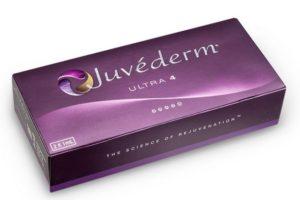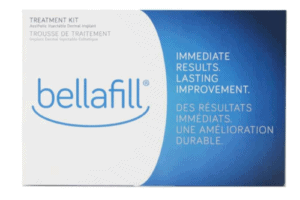
Did you know that nearly 20 million Americans undergo plastic surgery each year? Dermal fillers offer a quick, easy way to plump up and rejuvenate thin, sunken areas of your face. They can also correct fine lines around the lips, so it’s no surprise that half of people aged 40-60 are treating themselves to surgery.
Dermal fillers are useful anywhere, including the eyebrows, around the mouth, in hollows under the eyes (tear troughs), and crow’s feet regions. They also help plump up lips.
But what exactly are dermal fillers? And how do they work? We’ve compiled an ultimate comprehensive guide on dermal fillers, so you can find out all you need to help decide if it’s something worth considering for yourself.
There are now hundreds of different dermal fillers available on the market. Still, they all work similarly – by injecting a gel substance into the skin’s deeper layers. The gel causes the collagen underneath to swell, which lifts and tightens the skin’s top layers (the epidermis). Once the gel wears off, the skin’s average elasticity then kicks in and produces collagen all by itself.
Dermal fillers were first developed to treat wounds after surgery or accidents but have since evolved for cosmetic use. While the procedure is still a form of surgery, it is more like a quick jab than significant surgery. It is usually carried out in a beauty clinic using a local anesthetic with minimal downtime. You can then go about your everyday life again within 24 hours.
The results are immediate and usually last for 12 months or thereabouts.
One of the most significant advantages of dermal fillers is that they are affordable. Anyone can afford them as an alternative to plastic surgery, which can be expensive, but dermal fillers are much cheaper. Compared to other types of anti-aging treatments, dermal fillers offer a much faster turnaround.
Dermal fillers are a speedy way to plump up or smooth out your skin areas that have become thin over time. They are often chosen for use on the face, lips, eyes, and neck and come in various forms.
Yes. If you have a scar that’s affecting your well-being, dermal fillers can be an excellent way to treat it. They can smooth out and soften the appearance of scars, making them less noticeable. It’s important to realize that dermal fillers won’t make spots disappear, but they can make them less prominent. They are excellent for treating scars that result from operations such as tummy tucks and breast surgery.
Dermal Fillers are becoming increasingly popular to repair fine lines around the lips and correct deep wrinkles on the face and neck. They are also useful for plumping up aged cheeks and lips.
Be sure to talk with a qualified practitioner if you’re considering dermal fillers, and let them know what your goals are. They can recommend the right solution for you.
Dermal fillers have a temporary effect; the improvement level varies from person to person, but most benefits will last six months to a year. After this period, you may need further filler treatment. Dermal fillers are not permanent.
Some dermal fillers contain a small amount of a radioactive material called Radium-223, which stimulates collagen production over time. Over the next year or so, your body will have produced enough natural collagen to make up for the amount added by the dermal filler.
Others form from hyaluronic acid, a sugar-based chemical found in our bodies and gives our skin a plump, youthful appearance. These fillers last longer and stimulate collagen production, which replaces the filler after it has worn off. This means that you’ll need periodic top-ups every six months or so to maintain your results.
Results vary depending on the individual and other factors like your skin condition and how much corrective work you need. Usually, two injections spaced four weeks apart can achieve results that will hold for at least 6-9 months.
For more stubborn cases or those requiring more correction: three or four injections are a possibility.
Endoscopic plastic surgery is ideal for all patients. It’s a flexible procedure, the surgeon only needs to make small incisions, and recovery time is usually shorter.
Keep in mind, intense plastic surgery requires larger incisions. Discuss with your surgeon whether endoscopic plastic surgery is right for your procedure.
Your practitioner will first clean your skin and inject a local anesthetic to numb the treated area. While you may feel a little stinging right after the drug, you’ll soon be pain-free.
The practitioner then uses a fine needle to administer the filler to your skin. At the same time, the anesthetic works to put you at ease. The syringe delivers a minute amount of the stuffing into each wrinkle or at each wrinkle’s origin. More than one injection is normal to achieve more detailed results. This process repeats for each wrinkle until complete or until you get the desired effect.
The results are immediate and visible. Once the practitioner has finished, they’ll let you know what to expect over the next couple of days and how to care for yourself afterward. Make sure you follow any instructions that they give you.
After the treatment, your skin might redden, swollen, or break out in a rash or acne-like spots for a few hours, but these reactions usually subside within 24 hours. Your skin is likely to appear plumper and softer; though, it may take several weeks or months for your skin to reach its final appearance. But don’t worry: it’s normal for your face to look different at first because of swelling.
The needle used when injecting dermal fillers is small, and many people do not feel any discomfort. Yet, it may be a little painful; a little anesthetic is available before treatment, so you don’t even feel the needle inserted.
Hyaluronic acid fillers are the most well-known and popular dermal fillers. The hyaluronic acid gel derives from a natural substance found in the human body, so it is, in fact, a naturally occurring filler material. Hyaluronic acid fillers come in different strengths (from low to high), and they all have their own unique properties. They can restore volume to almost any part of your face, including the lips, eyes, and cheeks.
Brand Examples: Restylane, Juvederm
Restylane contains a mix of different strengths of hyaluronic acid. Restylane is ideal for filling fine lines and wrinkles, adding volume to the cheeks, and softening deep creases on the face. It’s instrumental in treating facial lines around the nose and mouth. Still, it is also applied to other parts of the body to smooth out skin imperfections.

Juvederm is a hyaluronic acid filler with a smaller molecular structure than other brands. This allows the filler to sink deeper into the skin, providing beneficial results. Juvederm is useful for lip augmentation. Some practitioners use it as an alternative to lip implants because it is less invasive than surgery.
Calcium hydroxylapatite fillers come from natural minerals. They are handy for restoring volume to the cheeks, chin, and lips. They have a similar effect to Hyaluronic acid fillers, but they’re generally less plumping. Calcium hydroxylapatite fillers last longer, but they are also at a premium price.
Brand Example: Radiesse


Radiesse is a popular choice because its results tend to last longer than other similar dermal fillers. Radiesse was one of the first hyaluronic acid dermal fillers, and it has since been joined by numerous competitors.
At first, Radiesse was only available from select surgeons. Yet, now it’s widely available, which means that the price has fallen significantly. As a result, it’s quite a popular choice for dermal filler treatment in both the UK and the US.
Dermal collagen fillers are made from bovine collagen, which is the same material found in your skin. Collagen fillers are plumper than Hyaluronic acid fillers, and when used with micro-needling, their results can be more dramatic. However, collagen fillers tend to be more painful.
Brand Example: Sculptra
Like Radiesse, Sculptra restores volume to the face by improving the appearance of wrinkles and folds. However, unlike competitors, this filler also has significant volume-building properties as it’s slightly thicker than hyaluronic acid fillers like Restylane or Juvéderm. As a result of these qualities, Sculptra can produce even more dramatic gains than other dermal fillers.
Polymethylmethacrylate (PMMA) fillers are made from a unique polymer material, which is reliable and long-lasting. PMMA fillers have been used for more than 20 years and are now considered the standard of care for facial rejuvenation. The most common type of PMMA filler is Restylane, which lasts for up to a year. PMMA fillers are most often used to plump up sunken cheeks and lips.
Brand Example: Bellafill

Laser treatments, micro-needling, and other cosmetic procedures can be used alongside dermal fillers to increase the treatment’s effectiveness. And in some cases, fat transfer is used as an alternative. Though, of course, make sure you get advice first before proceeding with any complementary treatments, as they aren’t always necessary.
Fat transfer has been used in various applications to restore or enhance fullness to areas that have lost their natural elasticity, such as the nose and cheeks. Fat transfer involves harvesting unwanted fat from one area of the body and then injecting it into another part of the body where additional volume is desired. In the face, fat transfer can restore volume in places of previous significant weight loss.
Laser treatments can be used in combination with dermal fillers to provide additional benefits. For example, laser treatments can improve the appearance of scars or remove excess pigmentation. To get the best results, however, it’s generally advisable not to undergo treatment with both dermal fillers and lasers simultaneously as it’s difficult for the body to heal from multiple procedures simultaneously.
Micro-needling involves the insertion of fine needles into the skin to create shallow wounds, prompting a healing response in the body. This process stimulates the production of additional collagen and elastin to help tighten and smooth out the skin. Microneedling is a great way to get even better results from dermal fillers, especially if you have visible scarring or pigmentation.





Firstly, remember that when dealing with your personal health, never go for the cheapest option without researching. There are many people out there who will prey on naive and not follow correct procedures and certifications. So do be aware of this if prices seem initially high to you.
That said, a premium service needn’t be out of your budget. The cost will vary depending on the dermal filler used and the area it is being used on. It can also be influenced by location.
The cost of dermal fillers varies for each area and type of filler. Prices range from $400 to $4,000 depending on the brand, product strength, location, and other factors. It is best to discuss pricing options with a certified practitioner before starting treatment. Your practitioner may or may not charge for an initial consultation to explain your options and determine which filler is right for you.
Average Prices in the USA
Please note, of course, this is only for one syringe (and one session for fat grafting). Chances are you’ll need multiple depending on the work being undertaken. But if you’re lucky that your local surgery price matches, then this makes the task much easier for you.
Depending on the area to be treated, a dermal filler may be used for one treatment or several to achieve desired results. For example, many patients undergo a series of Fraxel treatments on the face because it can take several sessions (months apart) to complete the desired effect. This is very true for deep wrinkles that are impossible for topical creams and lotions to address.
Dermal fillers typically last a month, depending on how well they match the body’s collagen structure and its use. Some patients need more than one session for desired results. Patients should always discuss how many treatments are appropriate for their doctor and factor this into their costs.
Here we explain the side effects that are most common with dermal fillers. Remember that every person’s body is different and might react differently to the procedure. The best way to be sure about risks or possible side effects is to discuss them with a certified doctor before the procedure.
A lot of people are concerned with dermal fillers causing lumps or bumps beneath the skin. This is because dermal fillers are made up of hyaluronic acid gel, a naturally occurring substance in our body that lubricates and cushion joints. The hyaluronic acid gel used in dermal fillers is identical to what we have naturally in our bodies, so there are no worries about being rejected by the body.
So, always make sure to speak with your practitioner in detail about which type of dermal filler they recommend and whether they have experience using it. Also, make sure that you ask your doctor questions such as what types of anesthetic are available (if any) to use before treatment.
Dermal fillers are safe and hardly ever cause any significant problems. The result of your treatment should last a long time. Still, if it wears off early, your doctor should be able to tell you what might have caused it and correct the problem with a further injection. For example, suppose the arch of a foot appears flat and pronated. In that case, the doctor will suspect that your posterior tibialis tendon may have an injury.
A common misconception with dermal fillers is that they will migrate to different areas as your body absorbs them over time. The gel is fast-absorbing, like your own body’s hyaluronic acid, so you should start seeing results almost immediately. The only migration that can occur is if the dermal filler is too close to a muscle. It may migrate into the muscle.
The key is to present muscular imbalances early on instead of letting them progress to injury. Doctors aren’t perfect at diagnosis, which means you might need a few visits with a different practitioner before finding one who is competent and confident in their treatment approach.
Dermal fillers are a convenient and effective way to get your skin to look more youthful again. They’re quick, painless, and the results can last for a long time. It’s definitely worth considering if you’re having trouble with some of the more severe aging signs, such as deep wrinkles and eye bags.
Many people put off having dermal filling treatments because they don’t like the idea of needles, but when it comes down to it, they’re straightforward and fast. Get in touch with a trained practitioner to see if dermal fillers are right for you. Anyone considering dermal filler treatment should consult a practitioner before getting treatment to determine the results they can expect.
A qualified practitioner can assess whether a patient is suitable for dermal filler injections and recommend the best treatment options according to their individual needs. Get in touch with our qualified practitioners today to see if dermal fillers are right for you. Get ready to become the new you!
Wave Plastic Surgery